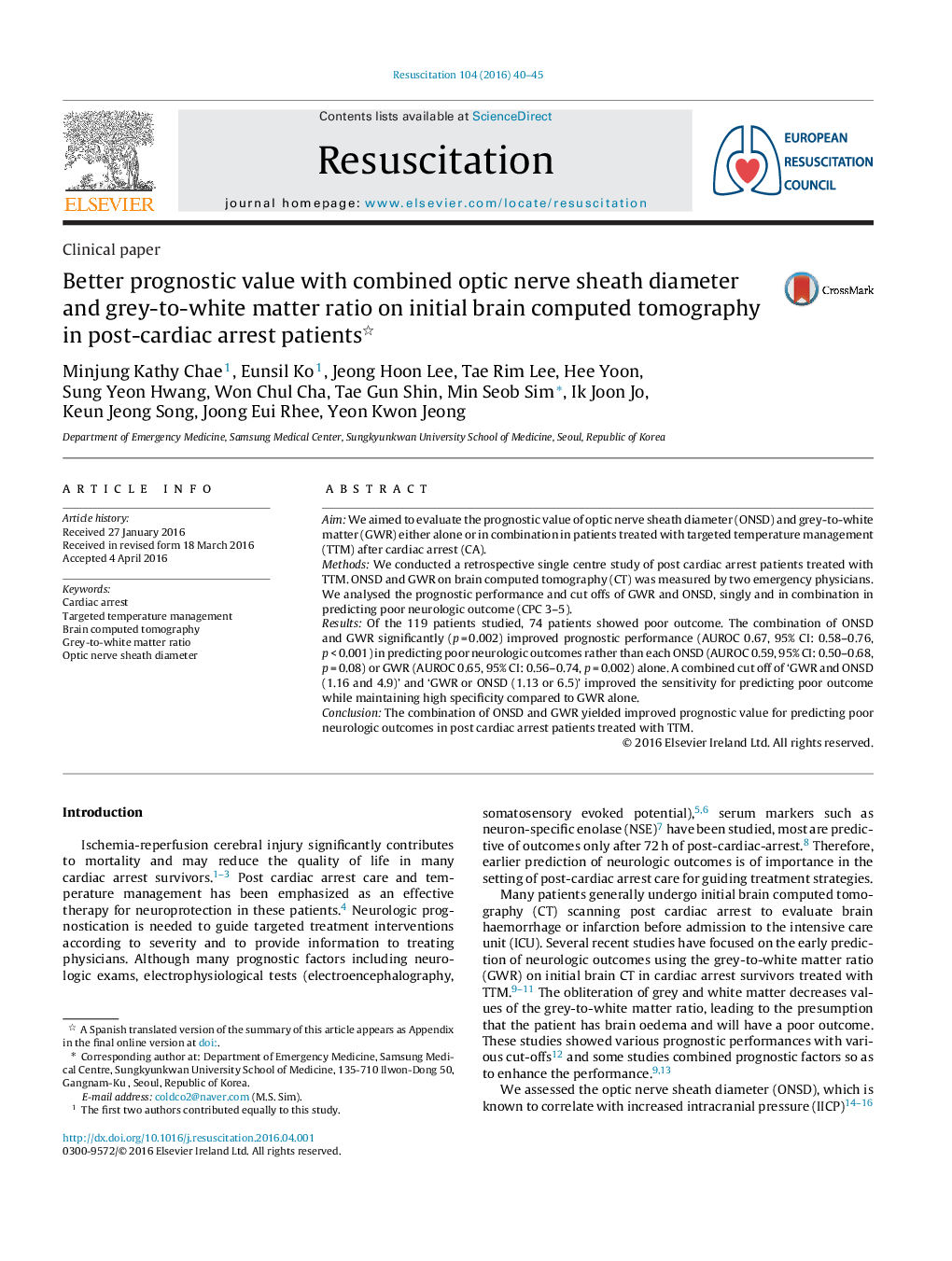| Article ID | Journal | Published Year | Pages | File Type |
|---|---|---|---|---|
| 5997243 | Resuscitation | 2016 | 6 Pages |
AimWe aimed to evaluate the prognostic value of optic nerve sheath diameter (ONSD) and grey-to-white matter (GWR) either alone or in combination in patients treated with targeted temperature management (TTM) after cardiac arrest (CA).MethodsWe conducted a retrospective single centre study of post cardiac arrest patients treated with TTM. ONSD and GWR on brain computed tomography (CT) was measured by two emergency physicians. We analysed the prognostic performance and cut offs of GWR and ONSD, singly and in combination in predicting poor neurologic outcome (CPC 3-5).ResultsOf the 119 patients studied, 74 patients showed poor outcome. The combination of ONSD and GWR significantly (p = 0.002) improved prognostic performance (AUROC 0.67, 95% CI: 0.58-0.76, p < 0.001) in predicting poor neurologic outcomes rather than each ONSD (AUROC 0.59, 95% CI: 0.50-0.68, p = 0.08) or GWR (AUROC 0.65, 95% CI: 0.56-0.74, p = 0.002) alone. A combined cut off of 'GWR and ONSD (1.16 and 4.9)' and 'GWR or ONSD (1.13 or 6.5)' improved the sensitivity for predicting poor outcome while maintaining high specificity compared to GWR alone.ConclusionThe combination of ONSD and GWR yielded improved prognostic value for predicting poor neurologic outcomes in post cardiac arrest patients treated with TTM.
